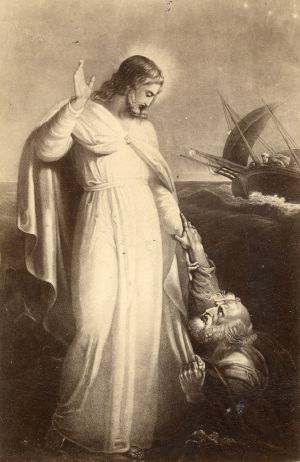Life and Death on the Atlantic
By Børge Solem

The transatlantic crossing was particularly hard on infants and small children. Despite the challenging conditions, it was not uncommon for women to give birth during the voyage. However, this was often dangerous for both mother and child due to the harsh environment in the between-decks. Many women died in labor, and even more children did not survive to see land. The majority of those who died on the sailing ships were infants and young children.
An emigrant crossing on the Anna Delius bore witness to both life and death:
"A boy died on the Atlantic, and another was born. I will never forget the funeral. The ship's carpenter made a coffin of rough planks and filled it with sand at the bottom. Then he bored holes in the sides to make it sink faster. But it did not sink quickly, and as the wood in the coffin had a pale color, we could see it for a long time as it slowly sank."
It was a common tradition to name children born onboard after the ship, the captain, or the ocean. On the ship Olaf in 1866, a woman gave birth to a boy, and the captain and doctor suggested he be named Olaf in honor of the ship. Similarly, on the Colonist, departing from Drammen in 1870, the daughter of Peder A. Mjör was named Atlanta Pedersdatter. A child born on the Juno in 1849 was baptized on July 12th. At the captain's insistence, the child was named Lars Juno Nilsen after the ship. On the Marie in 1864, the daughter of Mads Knudsen Fauske was named Atlanthea Norgea Madsdatter. Another girl born on the Balder in 1865 was named Laura Attelanta. On the Moss in 1869, Martin Atlantus Olsen was born on June 20th but sadly died on July 3rd, shortly after the ship reached the quarantine station at Grosse Île.
The voyages were often marked by tragedies. On the Victoria, sailing in 1861, many children died, and the ship's carpenter was kept busy building coffins. A passenger later recalled the sorrow of seeing the small coffins drift away on the sea. On that voyage, a girl was born and named Anna Victoria after the ship. On the Heros, sailing in 1868, the father of a deceased child used his food chest as a coffin. Another relative's child had also died, and the two little bodies were buried together in the ocean.On the Victoria sailing in 1861 there were many deaths, and a ships carpenter was busy building coffins for the many children who died. A passenger later told how sad it was to see the little coffins out on the seas as they sailed away. On that voyage a girl was born at sea and given the name Anna Victoria after the ship. On the Heros sailing in 1868, the father of a child that died took his food chest for the coffin. The child of a relative had also died, and the two little bodies were laid together and buried in the ocean.
Tragedy struck the Ske family aboard the Refondo in 1867, where four of their children died of pneumonia within one week. That voyage, like many others, saw a high number of deaths.

The emigrant vessel Laurdal departed from Porsgrunn and made a total of ten voyages with emigrants to Quebec between 1863 and 1872, carrying around 3,000 emigrants across the Atlantic. During a crossing in 1868, a girl was born and named Laura Atlanta, after both the ship and the ocean. The Laurdal was built in Maine in 1850 with a tonnage of approximately 630 register tons. It could carry about 350 steerage passengers at most, along with some cabin passengers. The captain on all its voyages was J. L. Petersen, and the ship had a crew of 16.
Next: Sailing ship provisions
